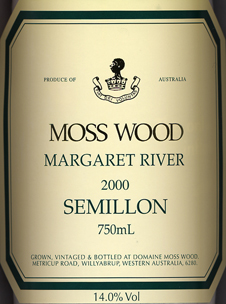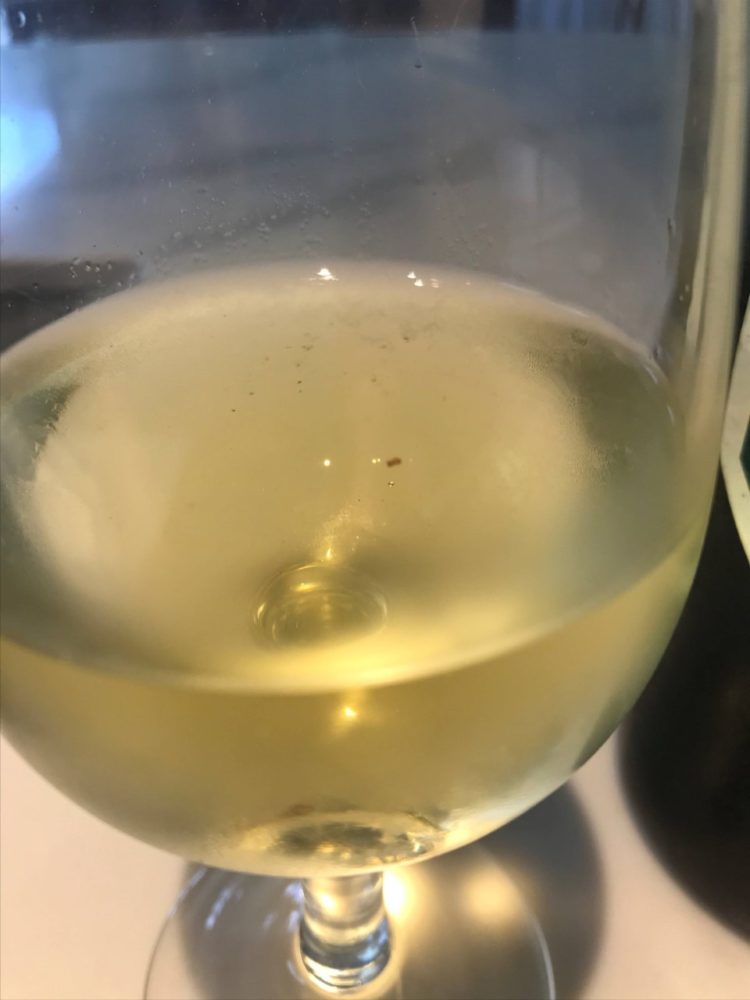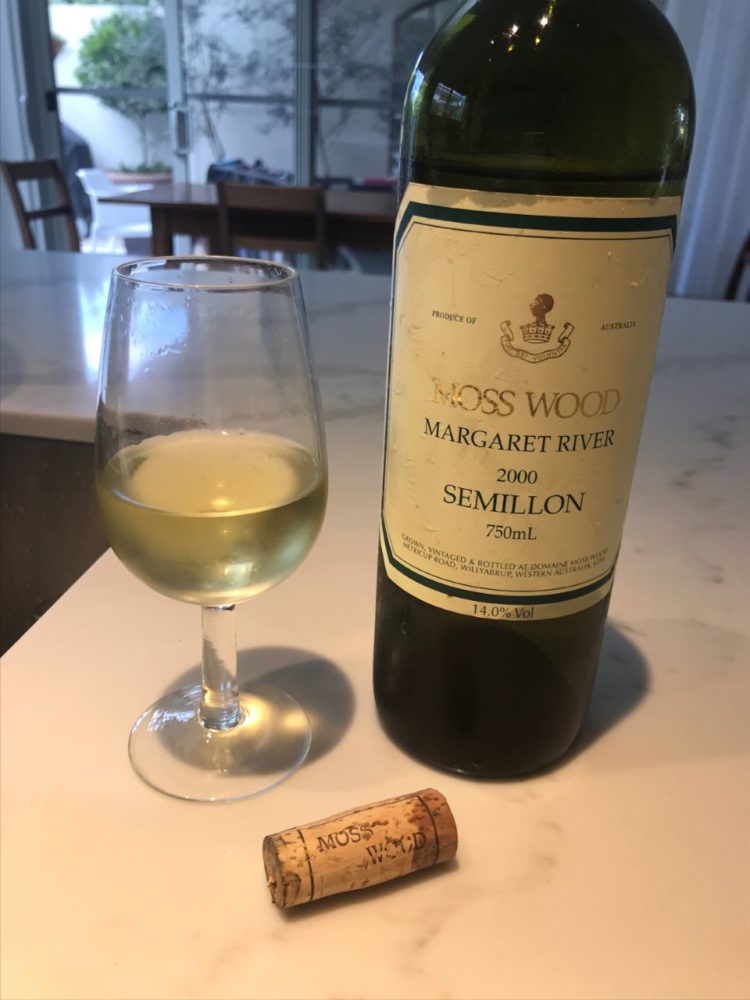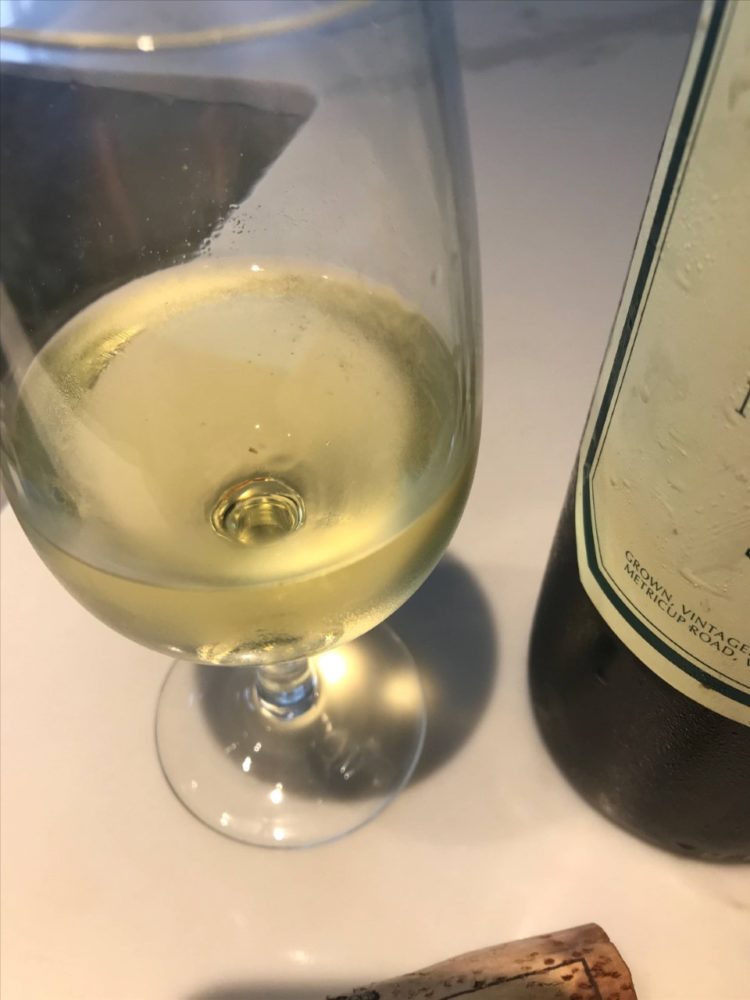Moss Wood 2000 Semillon

Wine Facts
| Harvested: | 05/3/2000 |
| Bottled: | 23/7/2000 |
| Released: | 08/11/2000 |
| Baume: | 13.50 |
| Alcohol: | 14.00% |
| Vintage Rating: | 9/10 |
SOLD OUT
The 2000 Moss Wood Semillon exhibits fig, melon and grapefruit citrus aromas, delicate, lemon sherbet characters and minerality, made more complex by some restrained grassiness and a crisp, dry and quite firm finish. It is fresh, clean and lively on the palate, has impressive weight, a generous, fleshy texture and good depth of flavour. While recognisably Moss Wood Semillon, it is more savoury and less overtly fruity than usual: perfect with food.
We were pleased with the quality and condition of the fruit and believe that this Moss Wood Semillon has been quite similar to the 1980 in the cellar. It showed suppleness, generosity, drinkability and appealing fruit. There was a creamy lusciousness that we believe is the feel of the vintage.
Moss Wood 2000 Semillon – The Wine Enthusiast
Smooth and slick in the mouth, with ripe yellow fruit and a viscous mouthfeel. Has a little caramel and a lot of roundness.
Vintage Notes
The 2000 season saw the first harvest of fruit from the new semillon block, which produced a total of two tonnes. It is always exciting when a new vineyard finally comes into production. When this is coupled with the joy surrounding the last vintage of the century, it is scarcely surprising that such a propitious occasion would bring forth a terrific vintage!
There had been concerns with the high temperatures of December, though the possibility of a hot harvest did not eventuate. January's rain was early enough not to split the semillon grapes which is a common worry in Margaret River: two weeks later and it might have been a problem. As it was, this rain freshened the vines and the sugar levels rose to ripeness with ease. The vines were in balance as the fruit ripened and for once, the numbers were spot on when picking commenced at 13.5 degrees baume. Yield was down slightly on normal - 10.3 tonnes/hectare (4.1 tons/acre) and so the wine has a touch more concentration of flavour than usual. In the past, the semillon has been picked at different levels of ripeness. The policy now is to wait until it is fully ripe and then pick. So this year, it was taken off in four batches between the 6th and 9th of March.
Production Notes
We followed our normal winemaking followed normal practices except for changes due to the better equipment which has come into use with the new winery building. Juice preparation occurred as per normal. The grapes were destemmed but not crushed, and were placed into the must chiller to cool to eight degrees. The gentler handling enabled the wine to retain better fruit characters and the lower temperature in the must chiller reduced oxidation and enhanced the depth of primary fruit. The fact that the grapes were not crushed means that there was less skin damage and so the tannin structure is much less harsh. It was settled for 48 hours and then the clear juice was pumped into the fermentation tank along with 2% of solids. Fermentation began spontaneously, triggered by wild yeast, though once the juice had dropped from 13.4 to 11 degrees baume, a pure yeast culture was introduced and the process continued until it was completed at 0 degrees. The temperature was maintained at 18 degrees Celsius and the lees were hand plunged every day. Once fermentation had been completed, this stirring was reduced to once every seven days for the eight weeks of lees contact that the wine was allowed. After that time, it was stabilised, filtered and bottled.
We believe that the wild fermentation yeast may have changed the fruit profile on the nose of the 2000 Moss Wood Semillon. Although the wine has complexity, great mouthfeel and good length, we feel that this Semillon is not as overtly fruity as we have come to expect. While particularly happy with this approach and its impact on the 1999 Moss Wood Chardonnay we had some concerns initially about the 2000 Semillon. However, the process of sequential inoculation (allowing spontaneous fermentation by wild yeast and the introduction of pure yeast during the fermentation process) has made a wine which is complex and interesting in its youth and likely to be even more attractive and fascinating at about ten years of age. We would encourage the keeping of one or two bottles for long term cellaring.
Cellaring Notes
This wine is complex and interesting in its youth and likely to be even more attractive and fascinating at about ten years of age.
February 5th, 2021
We recently received an email from a very long-term customer and Moss Wood Member, Stephen Tobin. He opened a bottle of Moss Wood 2000 Semillon and wanted to share with us that it "drank very well with nice long lemony finish" and was "fantastic". We greatly appreciate receiving feedback from our customers. Here is what Keith replied.
"Thanks very much for taking the trouble to write and share this with us. Much appreciated! It’s always good to hear when a wine has lived up to expectations.
There were some interesting aspects to the 2000 vintage. Crops were quite big because flowering conditions in 1999 were terrific and we had rain in January which ensured all those berries were a good size. Growing conditions were good and despite the solid crops, everything, including the Semillon, got comfortably through to full ripeness.
All the varieties showed a delicious approachability as a result.
It seemed at the time that the wines were so supple and generous that they might have aged too quickly but your email confirms this is not the case. The fact your bottle showed a good lemony finish is a great sign.
The other distinguishing feature of 2000 was that all the wines were made using wild yeast fermentation, which we hoped would add overall complexity to the nose and more glycerol to the palate. Although we were quite happy with the results, we decided not to continue the technique after that vintage because the variable quality of fermentations posed too much of a risk for us. However, we were always happy with the Semillon and it’s nice to see it stood the test of time.
Kind regards, Keith"



Photos courtesy of Stephen Tobin
